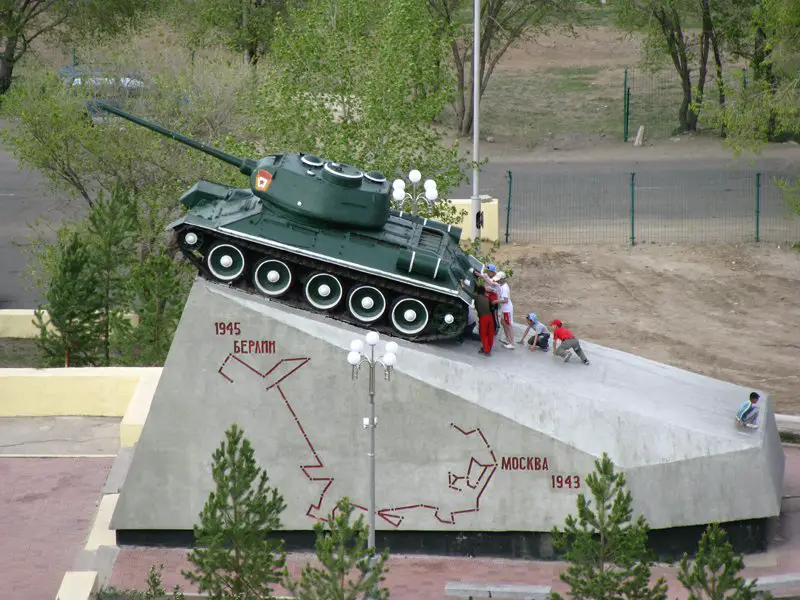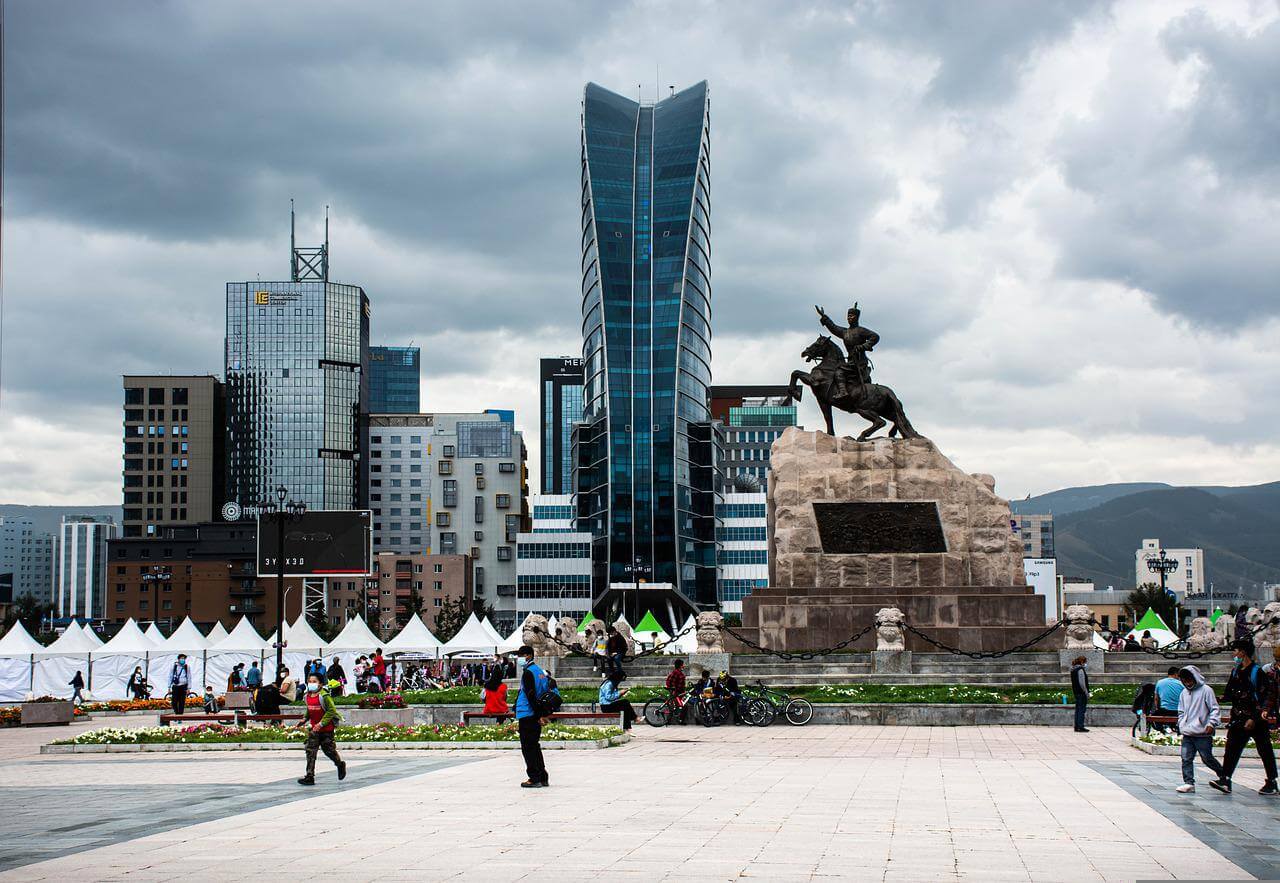At the top of Zaisan Hill there is a memorial complex that features a circular memorial painting that depicts scenes of friendship between the people of the USSR and Mongolia. The mural depicts scenes such as

- Soviet support for Mongolia’s independence declaration in 1921,
- the defeat of the Japanese Kwantung Army by the Soviets at Khalhkin Gol on the Mongolian border in 1939,
- victory over Nazi Germany and peacetime achievements such as Soviet space flights including the flight of Soyuz 39 which carried the first Mongolian into space, Jugderdemidiin Gurragchaa.

The height of Zaisan’s hill was 89 m at that time, but the 4m topmost part of the hill was destroyed by the memorial’s creators and kept secret until 2011. Zaisan Hill is made of reinforced concrete and has a circular wall with a circumference of 60 m.
On the lower wall of the complex are engraved the words: “Here, the memory of the Soviet soldiers is immortalized with the sun in the sky, and the fire on the ground.”
It takes guests approximately three hundred steps to climb up to the monument and mural. (Or 612 if they start at the bottom of the hill.) From there, visitors get a stunning panoramic view of Ulaanbaatar down below in the valley as well as the Tuul River meandering past the cityscape.

In 2003, a tank memorial that had been set up at a crossroads near the city center was relocated to the hill’s foot. It has a Soviet tank from a unit paid for by Mongolians. The tank monument includes a map showing how the force traveled from Moscow to Berlin in 1943 and took part in the fall of Berlin in 1945.
Nowadays, the most significant area that characterizes present-day Ulaanbaatar city is Zaisan, which is becoming a neighborhood where many people want to reside and do business. The office buildings and flats surrounding Zaisan Hill stand out from the rest since they are closest to the city center and have less air pollution.
Legends surrounding Zaisan Hill
A long time ago, Bogdhan mountain and Chingeltai mountains had an argument. Chingeltai Mountain said it was bigger than Bogdhan Mountain. They say that Mount Bogdhan got so mad, he cut off its head and put in front of him as a way of saying “You should always bow down to me.”
In one legend, the city of Ulaanbaatar was repeatedly struck by harsh drought and winds, which caused great damage to its residents. They got together and discussed that there was only one reason for this–evil spirits lived in a hole in the valley in front of the Tuul river. The people decided they would trap the evil spirits by covering the hole with a mountain’s head.
They used the peak of Chingeltai Mountain to conceal the cleft because it was taller than the other mountain. Since the hole had been filled, the calamity that had plagued the city’s people disappeared. Now, if you look closely, you’ll notice that Chingeltai Mountain’s top is typically flatter.
Related Content:
Ulaanbaatar The Best 12 Places for Travelers
Share to Public

